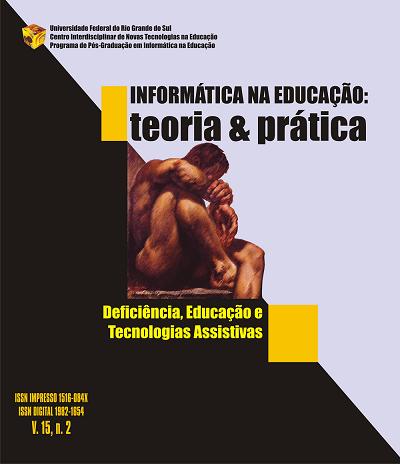A Simple Gaze Tracker for Computer Operation by the Disabled in Education
DOI:
https://doi.org/10.22456/1982-1654.36542Palavras-chave:
Assistive technology. Gaze-tracker. Education. Disability.Resumo
A compact gaze tracker was developed which consists of a head band and electrodes which process the Electro-Oculo-Gram (EOG) reflecting the patient´s eye movements. We have confirmed that the processed EOG signal correlates well with gaze angle, and we show that the instrument we designed enables a child to move a target on a screen up to 40 degrees left-right from central sight. To achieve this, a signal processing circuit was designed and placed on a head band to minimize noise. Further processing is based on the identification of saccadic eye movements and on the educated calculation of the estimated gaze angle as a result of angle change in both directions. A 75% success rate was achieved to detect transitions of eye positions in 5° steps from +40° to -40°. First tests by normal children suggest that the device may prove useful for communication by the disabled (e.g. patients with no control on hand movements). In such cases, extensive personal training will tap on neurological plasticity to achieve the required performance level for computer mouse command of educational games and for interactive applications in general.Downloads
Não há dados estatísticos.
Downloads
Publicado
2012-12-28
Como Citar
SIMINI, F.; TOUYA, A.; SENATORE, A.; PEREIRA ELSO, J.; DE CASTELLET, L. A Simple Gaze Tracker for Computer Operation by the Disabled in Education. Informática na educação: teoria & prática, Porto Alegre, v. 15, n. 2, 2012. DOI: 10.22456/1982-1654.36542. Disponível em: https://seer.ufrgs.br/index.php/InfEducTeoriaPratica/article/view/36542. Acesso em: 24 jun. 2025.
Edição
Seção
Artigos
Licença
Os direitos autorais para artigos publicados nesta revista são do autor, com direitos de primeira publicação para a revista. Em virtude de aparecerem nesta revista de acesso público, os artigos são de uso gratuito, com atribuições próprias, em aplicações educacionais e não-comerciais. Os textos podem ser compartilhados desde que respeitados os direitos autorais sob a licença Creative Commons Não comercial-CompartilhaIgual 4.0.
Recebido 2012-12-21
Aceito 2012-12-21
Publicado 2012-12-28
Aceito 2012-12-21
Publicado 2012-12-28


